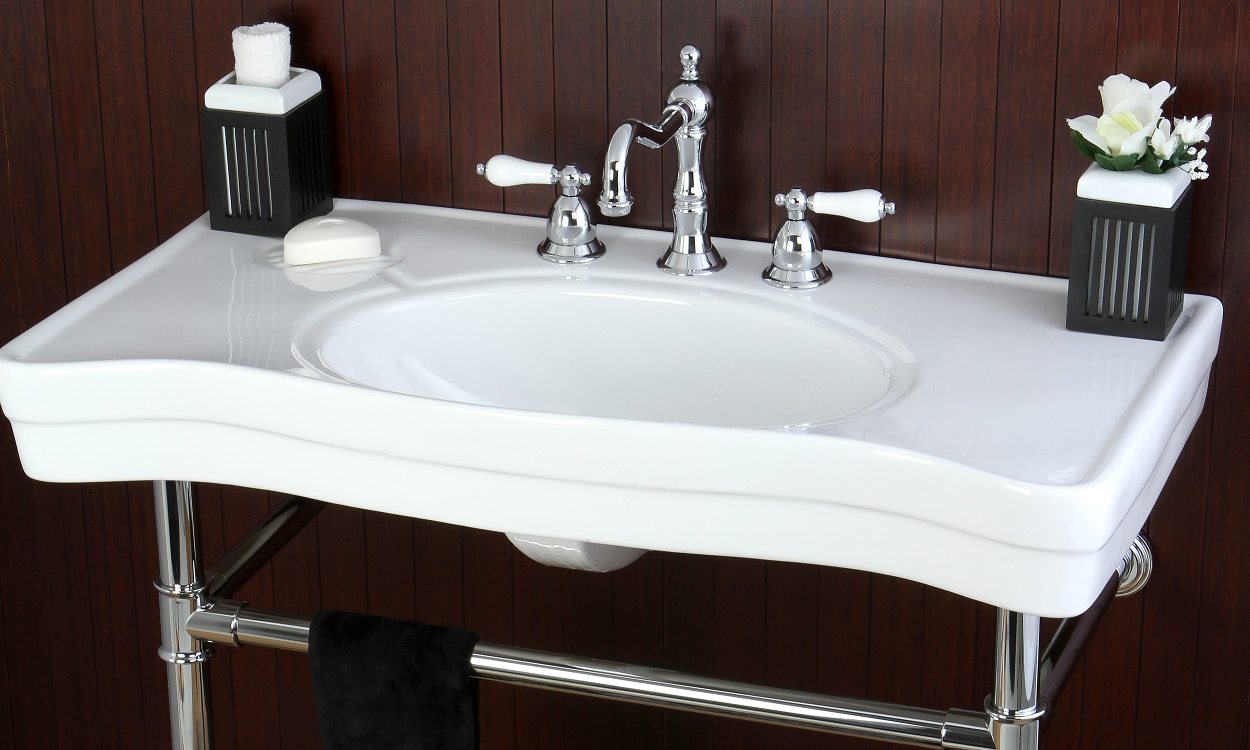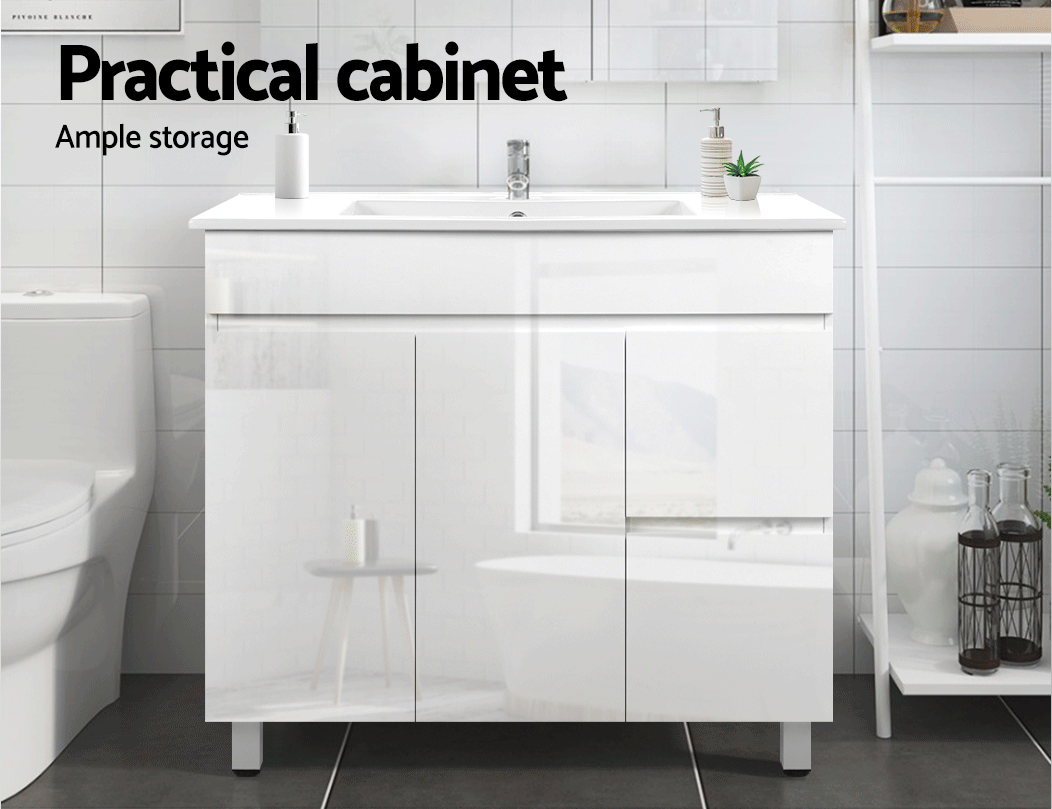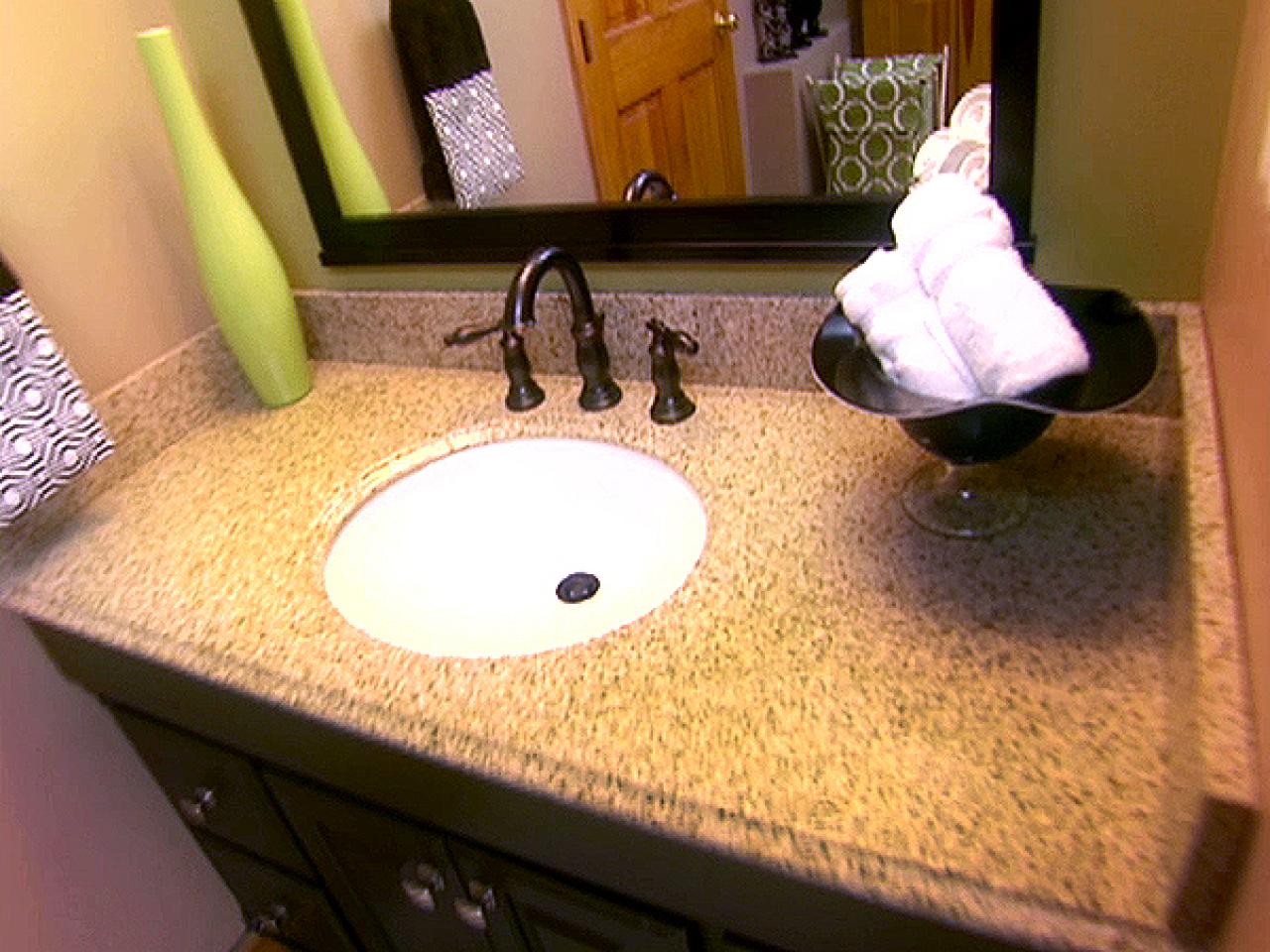Are you tired of your outdated bathroom vanity and ready for a change? Removing a bathroom vanity may seem like a daunting task, but with the right tools and knowledge, it can be a simple and satisfying DIY project. Follow these steps to easily remove your bathroom vanity and give your bathroom a fresh new look. First, start by turning off the water supply to the bathroom sink. This can usually be done by turning the shut-off valves located under the sink clockwise. If you cannot locate the shut-off valves, you may need to turn off the main water supply to your home. Next, disconnect the water supply lines from the faucet. Use an adjustable wrench to loosen the nuts connecting the water supply lines to the faucet. Be sure to have a bucket or towel handy to catch any water that may still be in the lines. Now it's time to disconnect the drain pipe. Use a pipe wrench to loosen the slip nut connecting the drain pipe to the bottom of the sink. Again, have a bucket or towel ready to catch any excess water. Once the water supply lines and drain pipe are disconnected, you can move on to removing the vanity top. If your vanity top is glued in place, use a utility knife to carefully cut through the caulk around the edges. If it is screwed in place, simply unscrew the screws from underneath the vanity top. With the vanity top removed, you can now focus on the vanity cabinet. Begin by removing any screws or nails holding the vanity cabinet to the wall. Then, carefully lift the vanity cabinet off the wall and set it aside. Lastly, remove the bathroom sink from the vanity top. This can usually be done by loosening the mounting clips underneath the sink. Once the sink is removed, you can dispose of the old vanity and prepare for your new one. 1. Remove Bathroom Vanity: Step-by-Step Guide
So, you've successfully removed your old bathroom vanity and now you're left with a pile of old parts. What should you do with them? Here are a few options: If your old vanity is still in good condition, you may be able to sell it or donate it to a local charity. Just make sure to clean it up and give it a fresh coat of paint if needed. Another option is to repurpose the old vanity cabinet for storage in another area of your home. Simply remove the sink and countertop, and use the cabinet for extra storage in your garage, laundry room, or basement. If the old vanity is beyond repair, you can always recycle the materials. Check with your local recycling center to see if they accept bathroom fixtures. Whichever option you choose, be sure to properly dispose of any hazardous materials, such as cleaning products or old pipes, in an environmentally friendly way. 2. Dismantle Bathroom Vanity: What to Do with Old Parts
Removing a bathroom vanity can be a messy and time-consuming task if you're not properly prepared. Here are a few tips to help make the process go smoothly: Before starting, make sure you have all the necessary tools on hand. This may include an adjustable wrench, pipe wrench, utility knife, screwdriver, and hammer. It's also important to have a plan for disposing of the old vanity and any other materials you remove. This may include renting a dumpster or scheduling a pick-up with your local waste management company. When disconnecting the water supply lines and drain pipe, be sure to have a bucket or towel handy to catch any water that may still be in the lines. When removing the vanity top, be careful not to damage any surrounding walls or tiles. Use a putty knife to gently pry the vanity top away from the wall if needed. Lastly, if you're not comfortable doing this project on your own, don't hesitate to hire a professional. It's better to have the job done right than risk causing damage to your bathroom. 3. Take Out Vanity: Tips for a Smooth Removal Process
Removing a bathroom vanity cabinet may seem like a simple task, but there are a few important factors to consider before starting: First, think about the new vanity you plan on installing. Will it be the same size as the old one? If not, you may need to make adjustments to the plumbing or walls. It's also important to consider the condition of the walls and flooring under the old vanity. If there is any water damage or mold, you may need to address those issues before installing the new vanity. Additionally, think about the location of any electrical outlets or lighting fixtures in relation to the new vanity. You may need to make changes to accommodate the new placement. Lastly, if you're installing a wall-mounted vanity, make sure the wall can support the weight. If not, you may need to add additional support before installing the new vanity. 4. Remove Vanity Cabinet: What to Consider Beforehand
If you're replacing your bathroom vanity, chances are you'll need to dismantle it first. Here's how to do it with minimal fuss: Start by removing any drawers and doors from the vanity cabinet. This will make it easier to handle and transport. Next, remove the vanity top following the steps outlined in heading 1. To remove the cabinet from the wall, start by removing any screws or nails holding it in place. Then, using a hammer and pry bar, gently separate the cabinet from the wall. Be careful not to damage the wall or flooring. If the cabinet has a back panel, remove it by unscrewing or prying it off. This will make it easier to get rid of the cabinet. Lastly, remove any remaining screws or nails from the cabinet and dispose of it properly. 5. Dismantle Vanity: Steps for a Quick and Easy Process
Removing a bathroom sink from the vanity top can be a bit tricky, but with the right tools and techniques, it can be done in no time. Here's what you need to know: Start by disconnecting the water supply lines and drain pipe following the steps outlined in heading 1. If the sink is glued in place, use a utility knife to carefully cut through the caulk around the edges. For a sink that is screwed in place, simply unscrew the mounting clips from underneath. Once the sink is detached from the vanity top, carefully lift it off and set it aside. Be sure to protect the surrounding area with a towel or drop cloth to avoid any damage. 6. Remove Bathroom Sink: Tips for a Smooth Disconnection
If you're replacing your bathroom vanity, chances are you'll also need to replace the countertop. Here are some options for disposing of the old one: If the countertop is still in good condition, you may be able to sell it or donate it to a local charity. Just make sure to clean it up and remove any caulk or adhesive before getting rid of it. Another option is to repurpose the old countertop for a DIY project. You can use it as a workbench in your garage or a tabletop in your backyard. If the countertop is broken or damaged, you can recycle it at your local recycling center. Just be sure to check their guidelines for acceptable materials. 7. Take Out Bathroom Vanity: What to Do with the Old Countertop
Before installing your new bathroom vanity, you'll need to remove the old countertop. Here's how to do it without causing any damage: Start by turning off the water supply and disconnecting the water supply lines and drain pipe following the steps outlined in heading 1. If the vanity top is glued in place, use a utility knife to carefully cut through the caulk around the edges. For a vanity top that is screwed in place, simply unscrew the screws from underneath. Once the vanity top is removed, use a putty knife to scrape away any remaining caulk or adhesive from the vanity cabinet. This will ensure a smooth and secure fit for the new countertop. 8. Remove Bathroom Countertop: Preparing for the New Vanity
If you're replacing your bathroom vanity, you'll most likely need to dismantle the cabinet as well. Here's what to do with the old parts: If the cabinet is still in good condition, you may be able to sell it or donate it to a local charity. Just make sure to clean it up and give it a fresh coat of paint if needed. Another option is to repurpose the old cabinet for storage in another area of your home. You can use it in your kitchen, laundry room, or garage for extra storage space. If the cabinet is beyond repair, you can always recycle the materials. Check with your local recycling center to see if they accept bathroom fixtures. 9. Dismantle Bathroom Cabinet: Disposing of the Old Parts
Removing your old bathroom vanity top is a necessary step before installing a new one. Here's how to do it properly: Start by turning off the water supply and disconnecting the water supply lines and drain pipe following the steps outlined in heading 1. If the vanity top is glued in place, use a utility knife to carefully cut through the caulk around the edges. For a vanity top that is screwed in place, simply unscrew the screws from underneath. Once the vanity top is removed, be sure to clean and prepare the surface for the new vanity top. This may involve removing any remaining caulk or adhesive and sanding down any rough spots. With these steps complete, you're now ready to install your new bathroom vanity and give your bathroom a fresh new look. Happy remodeling! 10. Remove Bathroom Vanity Top: Preparing for a New Look
The Benefits of Removing a Bathroom Vanity

Transform Your Bathroom with a Simple Change
 If you're looking to give your bathroom a fresh new look, one simple change you can make is to
remove your bathroom vanity
. This may seem like a drastic decision, but it can actually have numerous benefits for your bathroom design. Not only will it create more space and open up the room, but it can also add a touch of modernity and elegance to your bathroom.
If you're looking to give your bathroom a fresh new look, one simple change you can make is to
remove your bathroom vanity
. This may seem like a drastic decision, but it can actually have numerous benefits for your bathroom design. Not only will it create more space and open up the room, but it can also add a touch of modernity and elegance to your bathroom.
Creating More Space
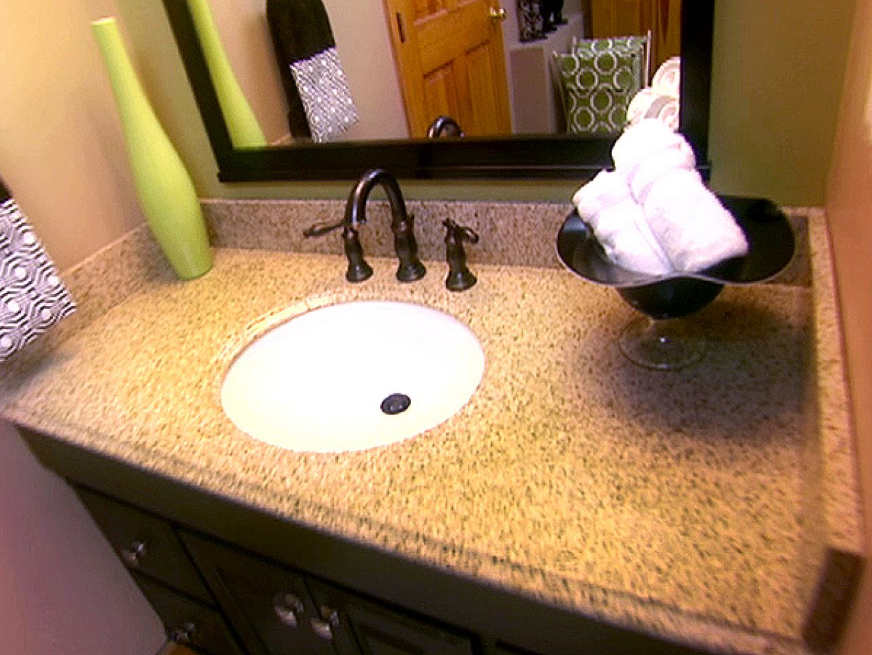 One of the main reasons to consider removing your bathroom vanity is to create more space in your bathroom. In smaller bathrooms, vanities can take up a significant amount of room and make the space feel cramped and cluttered. By removing the vanity, you can instantly create a feeling of openness and make the room appear larger. This can be especially beneficial for bathrooms that are used by multiple people or for those who have limited mobility and need more room to maneuver.
One of the main reasons to consider removing your bathroom vanity is to create more space in your bathroom. In smaller bathrooms, vanities can take up a significant amount of room and make the space feel cramped and cluttered. By removing the vanity, you can instantly create a feeling of openness and make the room appear larger. This can be especially beneficial for bathrooms that are used by multiple people or for those who have limited mobility and need more room to maneuver.
Adding a Modern Touch
 Another benefit of removing your bathroom vanity is that it can add a touch of modernity to the space. Vanities can often be bulky and outdated, and removing them can give your bathroom a more sleek and contemporary look. You can opt for a pedestal sink or wall-mounted sink instead, which not only takes up less space but also adds a touch of elegance to the room. This simple change can completely transform the overall aesthetic of your bathroom and give it a more modern and stylish feel.
Another benefit of removing your bathroom vanity is that it can add a touch of modernity to the space. Vanities can often be bulky and outdated, and removing them can give your bathroom a more sleek and contemporary look. You can opt for a pedestal sink or wall-mounted sink instead, which not only takes up less space but also adds a touch of elegance to the room. This simple change can completely transform the overall aesthetic of your bathroom and give it a more modern and stylish feel.
Customizing Your Bathroom Design
 By removing a bathroom vanity, you also have the opportunity to customize your bathroom design. With a traditional vanity, you are limited to the size, style, and color of the piece. But without a vanity, you have more options to choose from. You can opt for a unique and eye-catching sink, or you can install shelves or cabinets to store your toiletries and towels. This allows you to create a personalized and unique bathroom design that fits your specific style and needs.
In conclusion, removing a bathroom vanity can have numerous benefits for your bathroom design. It can create more space, add a modern touch, and give you the opportunity to customize your space. So if you're looking for a simple and cost-effective way to revamp your bathroom, consider taking out the vanity and see the difference it can make.
By removing a bathroom vanity, you also have the opportunity to customize your bathroom design. With a traditional vanity, you are limited to the size, style, and color of the piece. But without a vanity, you have more options to choose from. You can opt for a unique and eye-catching sink, or you can install shelves or cabinets to store your toiletries and towels. This allows you to create a personalized and unique bathroom design that fits your specific style and needs.
In conclusion, removing a bathroom vanity can have numerous benefits for your bathroom design. It can create more space, add a modern touch, and give you the opportunity to customize your space. So if you're looking for a simple and cost-effective way to revamp your bathroom, consider taking out the vanity and see the difference it can make.






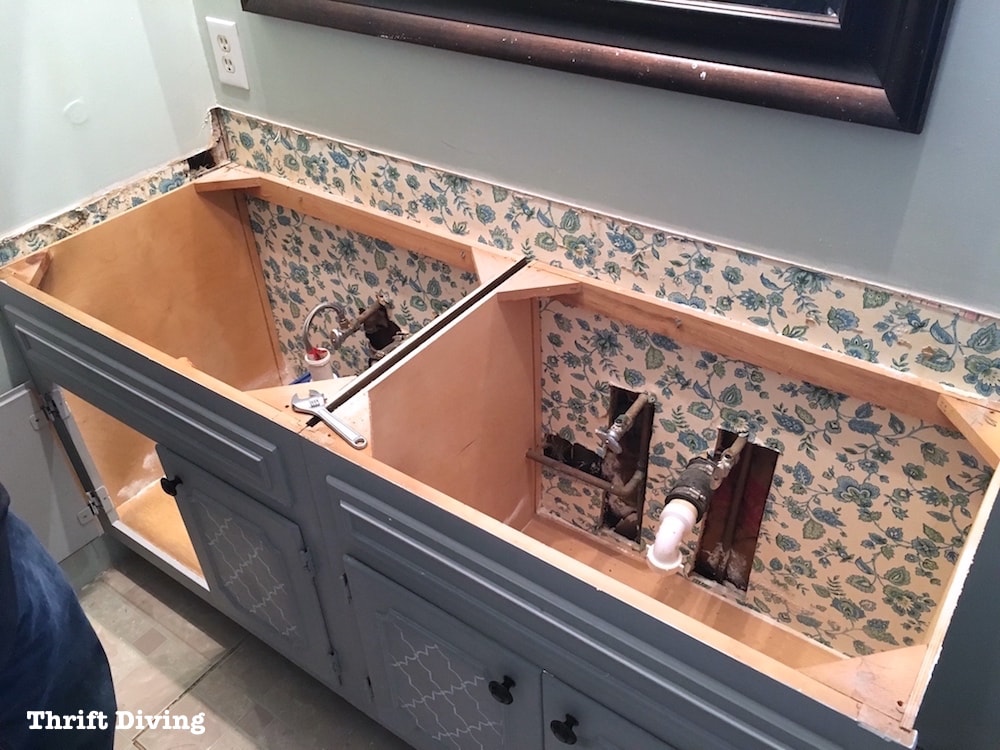
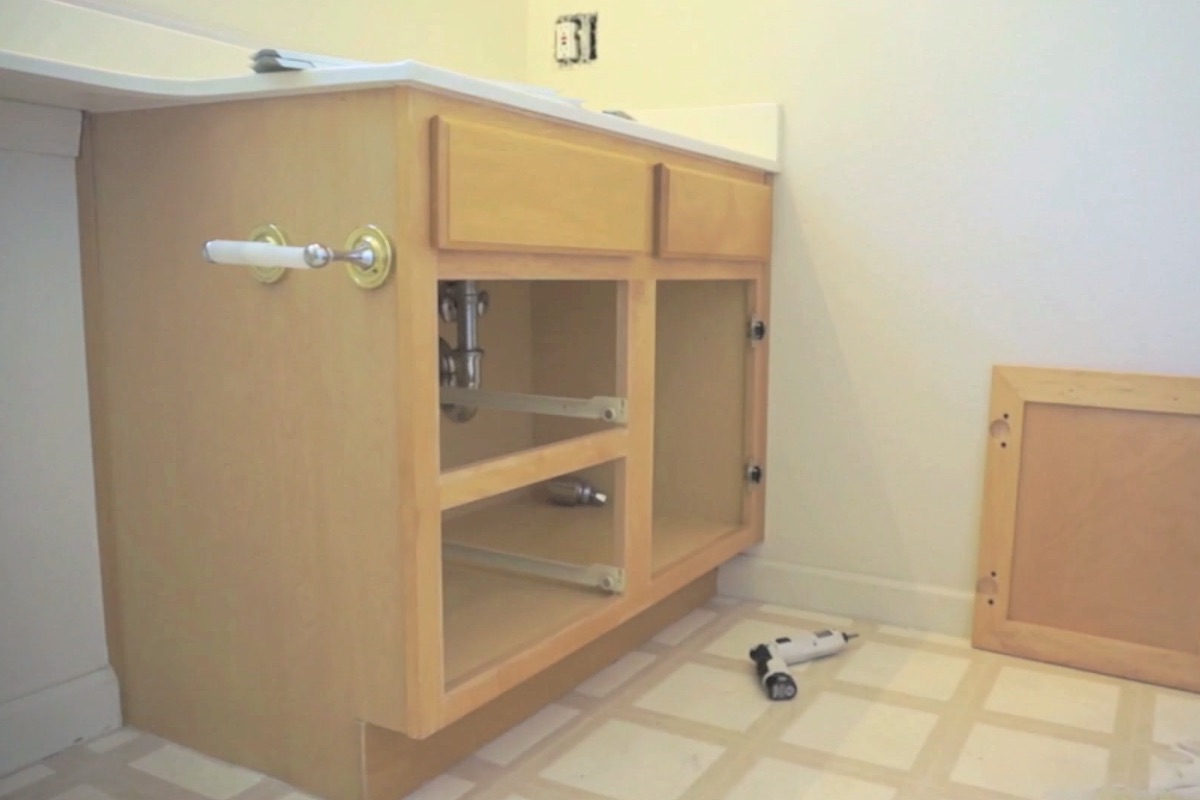


















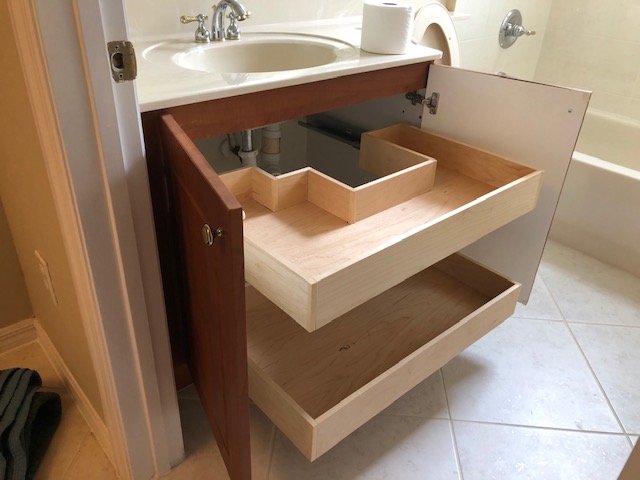





:max_bytes(150000):strip_icc()/luxury-bathroom-in-white-601975597-1598116abd92497ea75cbf1cdc825e26.jpg)













